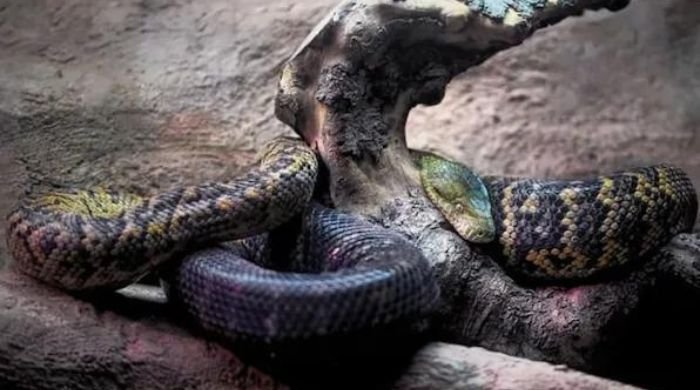In a remarkable discovery, paleontologists in Gujarat, India, have unearthed fossils believed to belong to what could be the world’s largest snake, named Vasuki Indicus.
This find, as reported by the Times of India, suggests that this ancient serpent was a formidable predator, potentially rivaling the longest snakes known to have existed on Earth.
The Discovery:
The fossils, discovered by researchers from the Indian Institute of Technology Roorkee (IITR), measure between 10 to 15 meters in length and are estimated to be approximately 47 million years old.
Professor Sunil Bajpai and Debajit Datta, a postdoctoral fellow at IITR, made this groundbreaking discovery and co-authored a study published in Scientific Reports.
Ancient Reverence and Description:
Datta noted parallels between this serpent and Vasuki, a snake revered in ancient Hindu scriptures.
This discovery suggests a historical link between ancient mythologies and the natural world.
Physical Characteristics:
Analysis of the fossils suggests that Vasuki indicus had a broad, cylindrical body, indicating a strong and robust physique, similar to that of the famous Titanoboa.
Behavior and Habitat:
Datta described Vasuki as a majestic animal, speculating that it may have been a gentle giant, resting with its head elevated on its coiled body for much of the day or moving slowly through swamps like an endless train.
The snake‘s habitat was likely a marshy swamp near the coast, set in a warmer global climate compared to today, which could have facilitated its immense size.
Significance and Implications:
Dr. Bajpai highlighted the significance of this discovery, emphasizing its importance in understanding ancient ecosystems in India and unraveling the evolutionary history of snakes on the Indian subcontinent.
Also read: WATCH: Large snake disrupts Lanka Premier League match
He stressed the vital role of preserving natural history and the crucial role of research in unlocking the mysteries of our past.
